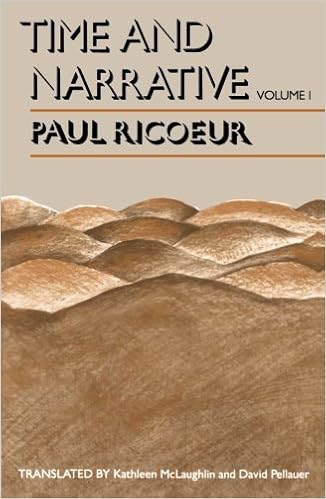
By Mark Rowlands
There is a brand new state of mind in regards to the brain that doesn't find psychological approaches completely "in the head." a few imagine that this elevated notion of the brain stands out as the foundation of a brand new technological know-how of the brain. during this e-book, major thinker Mark Rowlands investigates the conceptual foundations of this new technology of the brain. the hot frame of mind in regards to the brain emphasizes the ways that psychological tactics are embodied (made up partially of extraneural physically buildings and processes), embedded (designed to operate in tandem with the environment), enacted (constituted partially by means of action), and prolonged (located within the environment). the hot mind set in regards to the brain, Rowlands writes, is really an outdated mind set that has taken on new shape. Rowlands describes a belief of brain that had its clearest expression in phenomenology -- within the paintings of Husserl, Heidegger, Sartre, and Merleau-Ponty. He builds on those perspectives, clarifies and renders constant the tips of embodied, embedded, enacted, and prolonged brain, and develops a unified philosophical therapy of the unconventional perception of the brain that underlies the recent technology of the mind.
Read or Download The New Science of the Mind: From Extended Mind to Embodied Phenomenology (Bradford Books) PDF
Best Phenomenology books
Time and Narrative, Volume 1 (Time & Narrative)
Time and Narrative builds on Paul Ricoeur's prior research, within the Rule of Metaphor, of semantic innovation on the point of the sentence. Ricoeur right here examines the construction of that means on the textual point, with narrative instead of metaphor because the ruling quandary. Ricoeur unearths a "healthy circle" among time and narrative: time is humanized to the level that it portrays temporal adventure.
Phenomenology, including Marxism, pragmatism, and analytic philosophy, ruled philosophy within the 20th century—and Edmund Husserl is mostly inspiration to were the 1st to improve the idea that. His perspectives motivated quite a few very important later thinkers, similar to Heidegger and Merleau-Ponty, who finally became phenomenology clear of questions of data.
The philosophical paintings of Jean-Luc Marion has opened new methods of talking approximately spiritual convictions and reports. during this exploration of Marion’s philosophy and theology, Christina M. Gschwandtner provides a entire and demanding research of the information of saturated phenomena and the phenomenology of givenness.
Additional info for The New Science of the Mind: From Extended Mind to Embodied Phenomenology (Bradford Books)
Hence, the perceiving organism knows the constitution and never the array and, extra importantly, is able to make the most of the knowledge in regards to the atmosphere embodied within the array. after we enable that the optic array is an exterior constitution that embodies information regarding the surroundings, we're, in fact, compelled to confess that a number of the info proper to notion exists within the atmosphere of the perceiver. this can look like an earthly commentary. even if, an immense end follows from it. consider we're confronted with a selected perceptual job. If we settle for the assumption of the optic array, we needs to let that not less than a number of the info suitable to this job might be situated within the array. maybe, as Gibson turns out to indicate, this data can be adequate for us to complete the duty. probably not—in which case we'd locate it essential to postulate inner processing operations that complement or enhance the data inside the array. no matter if this is often so, even though, something is obvious: we can't start to estimate what inner processing an organism must accomplish except we know the way a lot info is already on hand to that organism in its optic array. The additional info on hand to the organism in its optic array, the fewer inner processing the organism must practice. knowing the inner procedures concerned about visible conception is logically and methodologically secondary to realizing the knowledge that's to be had to the perceiving organism in its surroundings. the subsequent degree in knowing visible notion will be to supply an account of ways a perceiving organism is ready to make the data inside the optic array to be had to it. right here we discover one other distinctively Gibsonian aspect: the emphasis on motion. As Gibson issues out, and the enactive method may echo this element approximately part a century later, conception is inextricably sure up with motion. Perceiving organisms usually are not, mostly, static creatures yet, quite, actively discover their setting. The optic array is a resource of data for any organism built to use it. however the optic array doesn't impinge on passive observers. fairly, the residing organism will actively pattern the optic array. whilst an observer strikes, the total optic array is remodeled, and such variations include information regarding the structure, shapes, and orientations of items on the earth. through relocating, and so effecting modifications within the optic array, perceiving organisms can establish and acceptable what Gibson calls the invariant details inside the array. this can be details that may be made to be had to an observer no longer by way of anybody static optic array as such yet basically 36 bankruptcy 2 within the transformation of 1 optic array into one other. think about, for instance, what's referred to as the horizon ratio relation (Sedgwick 1973). The horizon intersects an item at a selected peak. All items of a similar peak, no matter what their distance from the observer, are lower via the horizon within the comparable ratio.



